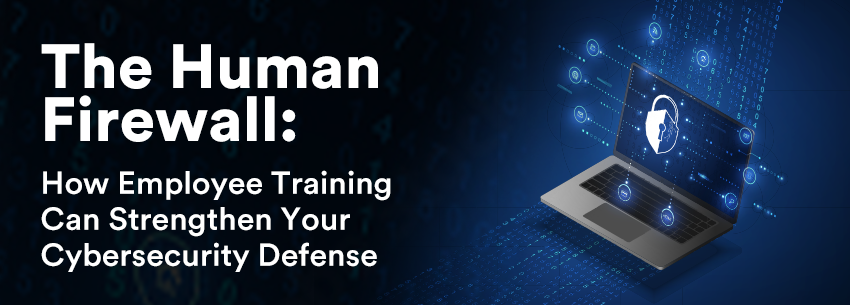The Human Firewall: How Employee Training Can Strengthen Your Cybersecurity Defense
As a business owner, you’ve probably felt the frustration of watching your employees fail to understand something you assumed was obvious to everyone involved. Unfortunately, this frustrating situation can happen in cybersecurity just as easily as anywhere else. A little well-placed human error can throw a wrench in even the best cybersecurity framework.
Because of this factor, cybersecurity training is a must. The question is, how? Not many of your employees have a background in cybersecurity, so there may be a long way to go with some of them. How can you keep your employees relatively proficient without wasting everyone’s time or sacrificing productivity?
Your business has unique cybersecurity needs depending on the information it handles, how much external communication happens daily, and where information is stored. Regardless of your business’s specific needs, chances are there are a few things you’ll need to instill in your employees.
Make stronger passwords stronger
First up on the list is strong passwords. You should already require strong passwords on everything, but ensuring employees understand the potential consequences of weak passwords helps reduce their frustration around your requirement. If an employee thinks a password is strong, make it stronger and explain your thought process. Training employees on where (or where not) to store their passwords can also help the business stay secure.
Take them phishing
Ensure employees know what phishing emails look like. Also, remind them that they shouldn’t input confidential information into unfamiliar programs linked in emails, even if the emails seem to come from a reliable source. To ensure your employees know how to spot phishing, you can do a little experiment of your own. Send emails from internal email addresses asking employees to do something that violates their training, such as downloading a mysterious file or inputting their company credentials on an external site. You will be able to gauge who needs additional training. This example is specific to phishing, but the same principle of testing employees’ understanding of their cybersecurity training can apply to almost any training you provide.
Where’s the data?
Organizational training is also generally helpful for most businesses’ cybersecurity needs. Continuous cybersecurity monitoring involves keeping track of all data the business stores, where the data is stored, which users and devices access that data, how likely certain data is to be breached, and how dangerous leaked data can be. It’s generally a good idea to keep track of all of that, and it’s way easier to pull off if your employees are organized enough not to leave old forgotten files around everywhere. If your employees get rid of everything the business doesn’t use and know where everything they use is, that makes cybersecurity monitoring and almost everything else easier.
While you may need to add other training for your business’s specific needs, following the fundamentals can improve your cybersecurity. Suppose your employees have strong passwords, awareness of what phishing looks like, and organizational skills that allow for effective security monitoring. In that case, your cybersecurity is leaps and bounds ahead of most other businesses.

